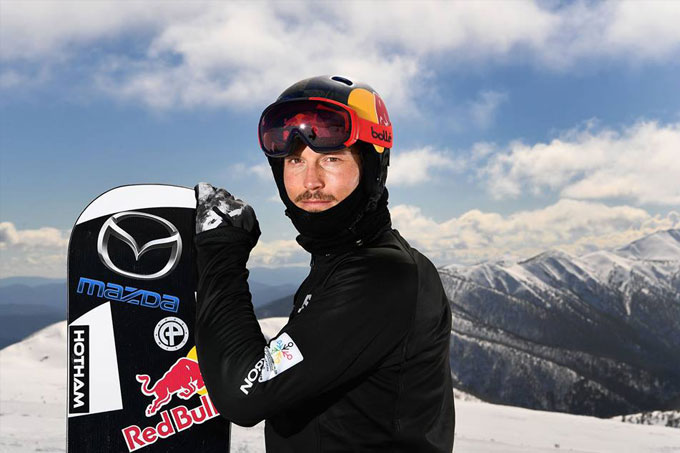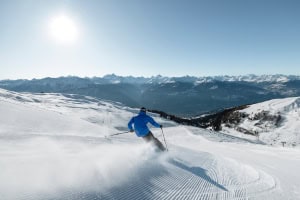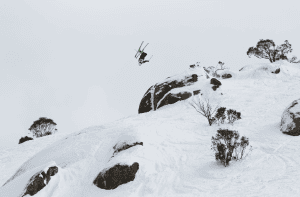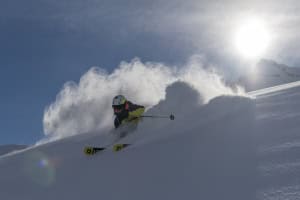Three Weeks to Pyeongchang 2018 – All Your Questions Answered
Mountainwatch | Kate Allman

Alpensia ski resort in Pyeongchang
Set your phone alerts and tell your housemates you’ve shotgunned the TV, folks. This Friday marks exactly three weeks until the Winter Olympics.
It’s a glorious few weeks that only come around once every four years, in which the Australian TV networks begrudgingly set aside their tight cricket, tennis and rugby league scheduling to showcase the world’s best winter athletes. Basically, it’s your one chance to watch international skiing and snowboarding on free-to-air TV in Australia.
The Games begin on the 9th of February (the Friday after Super Bowl Monday, if you’re a fan) and finish up on the 25th. That gives us powderhounds and ski nuts just two weeks to ride the stoke before it’s all over for another four years.
Gear up for it with this FAQ guide to the Pyeongchang 2018 Winter Olympic Games.
1. Where the heck is Pyeongchang and does it even snow there?
Pronounced “pee-yong-chang”, Pyeongchang is not to be confused with Pyongyang – the capital of that somewhat belligerent, communist nation north of the heavily fortified border.
Pyeongchang is a county about three hours’ drive east of South Korea’s capital city, Seoul, with four ski resorts that will host the 2018 Games. As I explained after the Rio Summer Games back in 2016, South Korea may not be everyone’s first choice for a skiing holiday. And despite its relatively low elevation (ranging from 500m to 900m above sea level – compared to Thredbo’s 2,228m-high Mt Kosciusko) it actually records very low temperatures throughout winter.

The Olympic Torch Relay on January 15, 2018. Image: Pyeonchang 2018
While temperatures soared above 15 degrees Celsius on some days during Russia’s Sochi Winter Games in 2014, the Pyeongchang Organising Committee says Pyeongchang’s average February temperatures over the past decade averaged -4.5 degrees. Forecasters have told spectators to prepare for colder-than-usual temperatures at the opening ceremony on 9 February, as frigid air blowing in from the north will whip up an icy wind chill.
The only mogul South Korea might have to overcome in terms of weather is that it receives very little natural snowfall, and has recorded only a few centimetres snow for 2018 so far. At this stage Pyeongchang snow forecasts are looking dejectedly dry. Fortunately, its resorts have some of the best snowmaking facilities in the world (as Mountainwatch’s Alex Horvath discovered on a trip there). Its snow guns can produce up to 20,000 cubic metres of man-made snow per day, which, when groomed, makes for aggressive, grippy turns.

Bokwang Snow Park, the venue for freestyle skiing and snowboarding events at the 2018 Winter Olympics. Image: Pyeongchang 2018
2. Where are we at re: potential nuclear war?
Whether the bomb warnings are real or are just wayward Hawaiian interns learning which buttons not to press at the government alert centre, concerns have been raised about the safety of the Games. Some say that sending the world’s best athletes and high-up government officials to a country 80km south of a militarized communist nation with nuclear weapons might not be the best idea.
However, North Korea announced last week that it would send a team of athletes, high-ranking officials and even a cheer squad to take part at Pyeongchang in February. This week, the North went even further, announcing that it hoped to field a joint women’s ice hockey team with South Korea at Pyeongchang. Such team-building proclamations represent diplomatic ice-breakers for the two countries (which were technically at war) and allow the rest of us to breathe an uneasy sigh of relief for the time being.
3. Who are the top contenders?
US President Donald Trump was recently caught bragging about the size of his “nuclear button” compared to that of the “little rocket man”, North Korean leader Kim Jong Un. Leaving the sexual innuendo of this comment aside, the US is right to be confident about one thing: the size of its winter Olympic team compared to North Korea’s. The US team roster will likely reach more than 200 athletes at Pyeongchang, and consistently strong teams in the past have earned the Yanks a total of 2,522 medals (1,022 of them gold) at all Winter Olympics.
In contrast, North Korea has won just two medals at any Winter Olympics. And BBC reckons that the North Korean team will this year be limited to just two figure skaters.
According to data by The Guardian, the US has won the highest total number of Winter Olympics medals in history, followed by Canada, Russia, Norway, Sweden, Finland, Germany and Switzerland. Australia doesn’t feature on the list, but that’s not to say we don’t have any serious contenders heading to Pyeongchang.

Maria Riesch of Germany competing women’s super combined at the Vancouver 2010 Winter Olympics. Photo by Doug Pesing
4. Which Aussies are in with a chance?
Australia’s moguls queen Britt Cox first stunned the world when she competed in Vancouver’s 2010 Olympics at just 15 years old. She went on to win Australia’s first ever female World Cup skiing medal, and was the first Australian woman to win the Crystal Globe for Women’s Moguls in 2017 at just 22 years old. Now 23, Britt is steering through a solid World Cup season, having won the season-opening moguls event in Finland and recently taking gold at the Calgary event. She will certainly be one to watch at the Games.
Junior Snowboard World Champion Tess Coady also started the year with a bang, taking bronze and Australia’s first-ever Snowboard Slopestyle World Cup medal in Snowmass on Friday. The 17-year-old is only the second Aussie to have won a medal in snowboarding slopestyle, after Torah Bright won bronze in the 2013 World Championships.

Britteny Cox will head to Pyeongchang as one of the favourites for the women’s moguls event
Australian snowboarder Scotty James won silver and was looking fierce on the halfpipe at the US Grand Prix at Snowmass on 14 January, and Olympic veteran Alex “Chumpy” Pullin won back-to-back golds at the first of the World Cup Snowboard Cross races in Argentina last September and is looking good on the World Cup circuit.
Veteran freestyle skier Lydia Lassila also recently confirmed she will enter her fifth Olympics by heading to Korea before she retires – a record number of Olympics for any Australian woman. Lassila only just failed to land a women’s first quad-twisting triple somersault at Sochi, and took home the bronze for her efforts. It would be great to see Lyds nail her landings and finish her career with some high scores (and hopefully a medal).
Follow the Olympic Winter Institute of Australia for news on these athletes and the rest of the Australian team.

Two-time World Champion Alex “Chumpy” Pullin has been looking good on the World Cup circuit
5. When do we tune in?
Usually Winter Olympics are set around the world in devastatingly inconvenient time zones for Australians. However this year, east-coast Australians will be able to catch live broadcasts of the Pyeongchang Games during relatively sensible hours.
Sydney is just two hours ahead of Pyeongchang – so if the opening ceremony starts at 8pm on Friday 9 February in South Korea (spoiler: it does), then it will be broadcast live at 10pm in Sydney. That means 9pm for Brisbane residents. Perth people have to stay up a few hours longer (sorry guys).

Pyeongchang mascots Soohorang and Bandabi
The official Pyeongchang website has a handy schedule of events and you can even download an app to remind you when your favourite finals will be on. The women’s moguls final, for example, will begin at 9.30pm Sydney time on 11 February. The women’s aerials finals (come on Lydia Lassila!) will hit Sydney TVs at 10pm on 16 February.
Got more questions? Tweet @mountainwatch @KateAllman1 and I’ll try to answer them in my next South Korean Olympic run-down. Geonbae (cheers)!






